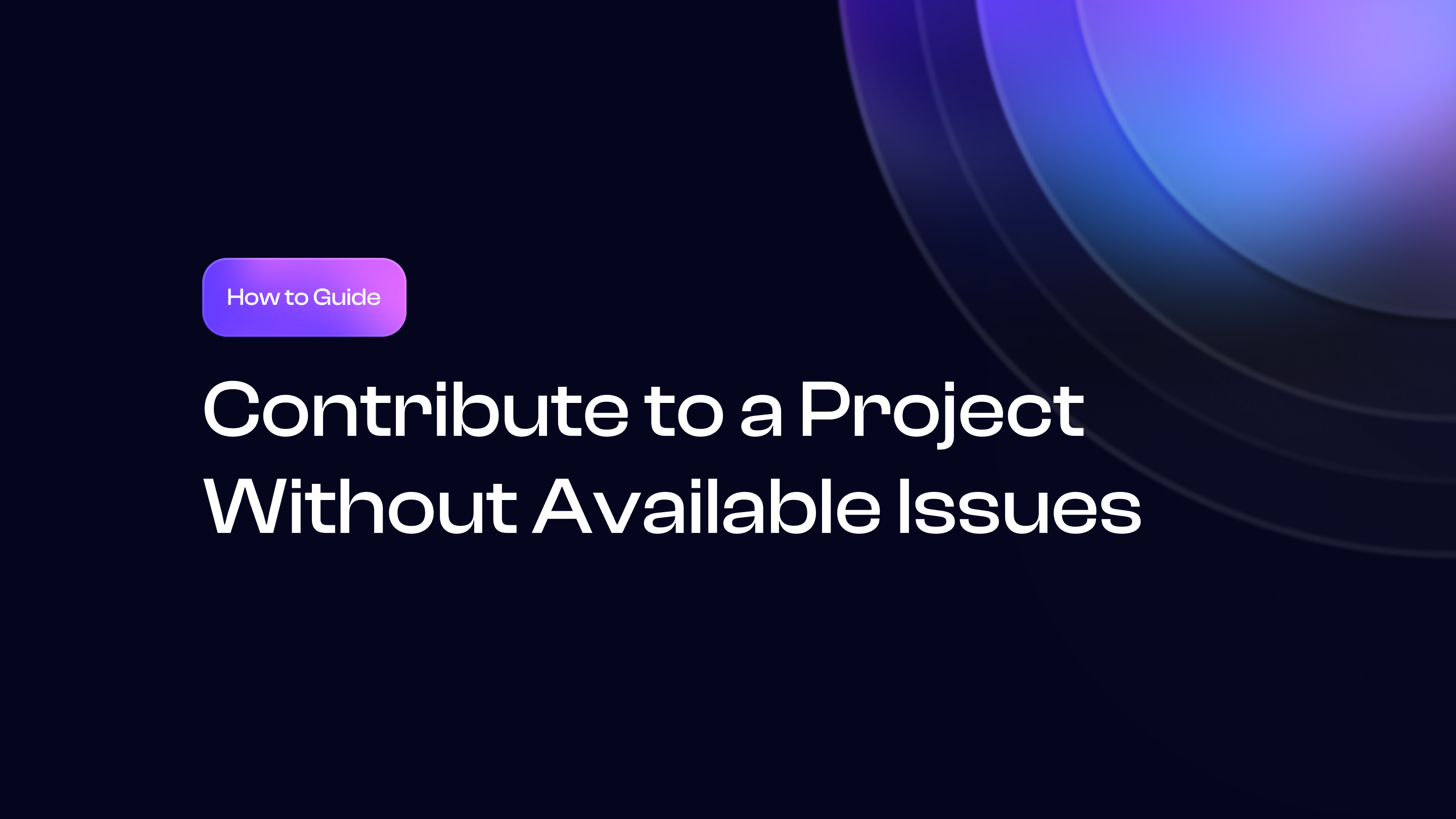Welcome to this guide! If you want to contribute to an Open Source project but can't find open or accessible issues, don't worry. There are many ways to add value to a project. This guide will explain how to test, explore, and improve a project even without available issues.
📌 Understanding the Project
Before contributing, it's essential to understand the project and its goals.
📖 Read the Documentation
- Check the project's README (usually found at the root of the GitHub repository).
- Explore documentation files like
CONTRIBUTING.mdordocs/. - Look for installation and usage guides.
💬 Join the Community
- Join discussions on Discord, Slack, or GitHub Discussions.
- Follow project announcements on Twitter or other social media.
🛠 Explore the Codebase
- Clone the project and open it in your IDE.
- Identify the main folders and files.
- Look for configuration files (e.g.,
.env.example,package.json,Dockerfile).
🏗 Installing and Testing the Application
To better understand the project, try installing and running it.
⬇️ Clone and Install
# Clone the repo
git clone <repo-url>
cd <project-name>
# Install dependencies (example for Node.js)
npm install
▶️ Run the Application
- Follow instructions to run the application locally.
- Use commands like
npm start,docker-compose up,yarn dev, etc. - Note any errors or issues encountered.
🧪 Test Features
- Explore key features.
- Note bugs, inconsistencies, or possible improvements.
- Test the UI and verify that everything works as expected.
🔎 Identifying and Reporting Issues
Even without open issues, you can contribute by identifying problems.
📝 Types of Issues You Can Create
- 🐛 Bugs: Problems encountered during use.
- ⚡ Improvements: Ideas to enhance UX, performance, etc.
- 📖 Documentation: Missing or unclear information.
- 💡 Feature Requests: Suggestions for new functionalities that could improve the project.
🏷 How to Structure Your Issue
To make it easier for maintainers to understand and act on your issue, structure it clearly:
🔹 Title
- A concise and descriptive title (e.g., "Fix login button not working on mobile").
📌 Description
- A clear and concise description of the issue.
📍 Steps to Reproduce
- Go to
http://localhost:3000 - Click the "Login" button
- Observe the error
✅ Expected Behavior
- Describe what should happen instead.
📷 Screenshots or Logs
- Include screenshots or logs if applicable.
💻 Environment (if relevant)
- OS: Windows/macOS/Linux
- Browser: Chrome, Firefox, etc.
- Version of the project
💡 Possible Solution (if any)
- If you have an idea for a fix, describe it.
Example issue format:
### 🐛 Problem Description
A clear and concise description of the bug or improvement.
### 🔁 Steps to Reproduce
1. Go to `http://localhost:3000`
2. Click the "Login" button
3. See the error
### ✅ Expected Behavior
The button should open the login page.
### 📷 Screenshot
(add screenshots if necessary)
### 🖥 Environment
- OS: macOS Monterey 12.3
- Browser: Chrome 98
### 💡 Possible Solution
It might be due to a missing event listener on the button.
📢 How to Create an Issue on GitHub
- Go to the project's GitHub repository.
- Click on the "Issues" tab.
- Click on "New Issue."
- Choose the appropriate issue template (if available) or select "Open a blank issue."
- Fill in the title and description using the structured format described above.
- If applicable, attach screenshots, logs, or additional context.
- Click "Submit new issue."
By clearly structuring your issue, you help maintainers understand and address it more efficiently. This type of contribution is highly appreciated by maintainers as it shows genuine interest in the project and helps improve its quality. Furthermore, engaging in issue reporting allows you to gain deeper knowledge of the project and progressively develop your expertise in Open Source contributions.
🎯 Conclusion
Contributing to an Open Source project isn't just about coding open issues. You can help by testing, identifying problems, improving documentation, and providing feedback to maintainers. Every contribution matters and supports the community! By structuring your issues clearly, you make it easier for maintainers to review and act on them.
Moreover, actively reporting issues and suggesting improvements not only helps maintainers but also allows you to build knowledge and experience in the project, which can lead to more meaningful contributions over time.
Good luck and happy contributing! 🎉
